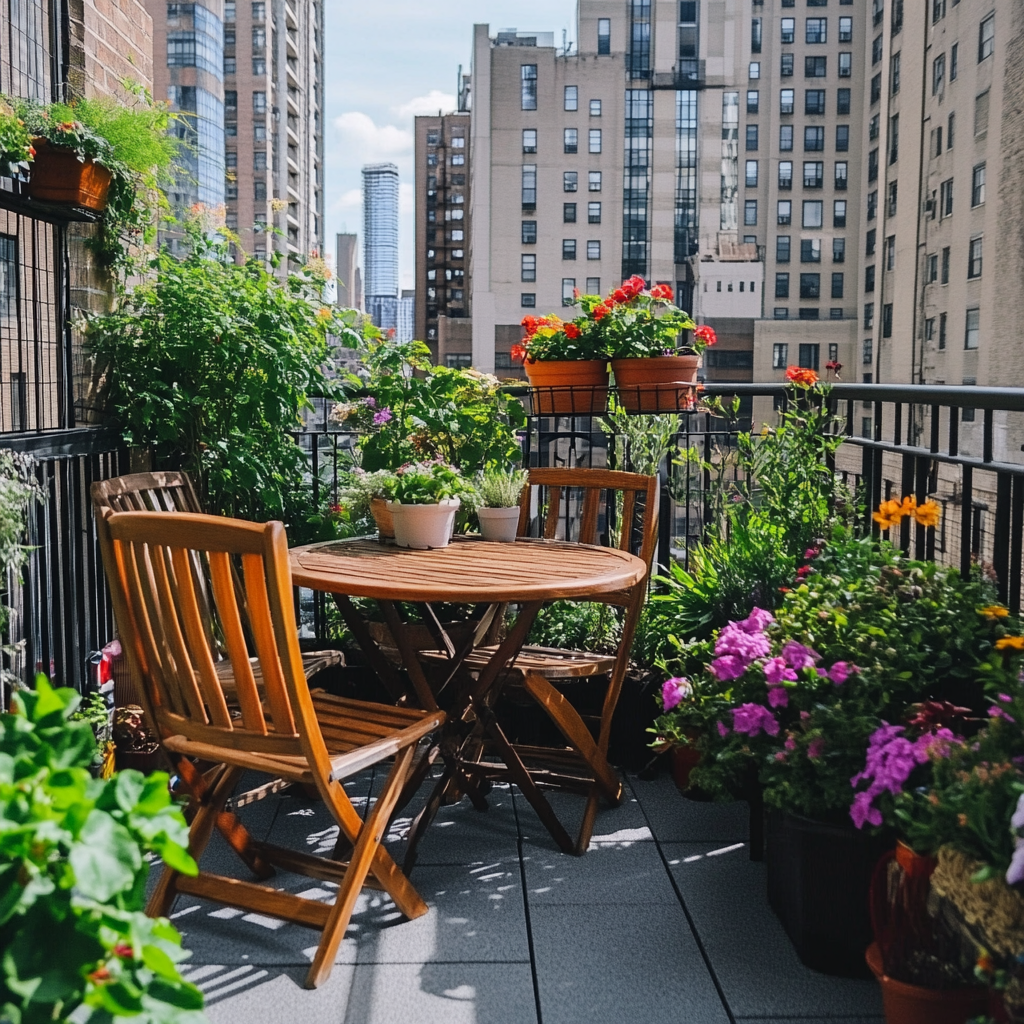Choosing small plants for apartments is a smart way to bring nature indoors. They add beauty and improve air quality in compact spaces.
Living in an apartment shouldn’t limit your green thumb. Small plants fit perfectly on windowsills, shelves, or small tables. They brighten up your home and create a calming environment. Selecting the right plants can be tricky with limited space and light.
This guide will help you pick the best small plants for your apartment. We will explore easy-to-care-for options that thrive indoors. Whether you’re a plant newbie or an experienced gardener, you’ll find useful tips here. Let’s dive into the world of apartment-friendly plants and transform your living space into a green oasis.

Credit: gardenseason.com
Benefits Of Small Plants
Small plants offer numerous benefits, making them ideal for apartments. They can enhance your living space and improve your well-being. Let’s explore the key benefits of small plants.
Improving Air Quality
Small plants help purify the air in your apartment. They absorb toxins and release oxygen. This process can reduce indoor air pollution. Cleaner air can lead to better health and fewer allergies. Some great options include spider plants and snake plants.
Enhancing Decor
Small plants can make your apartment look more inviting. They add a touch of nature to your decor. You can place them on shelves, tables, or windowsills. Their vibrant colors can brighten up any room. Popular choices are succulents and ferns.
Assessing Your Space
Choosing the right small plants for your apartment starts with assessing your space. This step is crucial for plant health. It ensures the plant’s growth and well-being. Two important factors to consider are lighting conditions and available space.
Lighting Conditions
Lighting conditions in your apartment play a significant role. Some plants need direct sunlight. Others thrive in low light. Observe the natural light in your apartment. Which rooms get the most sunlight? Which areas are shaded? This will help you determine which plants will thrive.
For sunny spots, consider succulents or cacti. They love direct light. For shaded areas, ferns or snake plants are better. They can grow in low light conditions. Knowing your lighting conditions ensures your plants get the right amount of light.
Available Space
The available space in your apartment is another key factor. Small plants are ideal for apartments with limited space. Measure the areas where you want to place your plants. This helps you choose the right size and type of plant.
Consider vertical space too. Hanging plants or wall-mounted planters save floor space. They add greenery without cluttering your apartment. Small potted plants can fit on shelves, windowsills, or tables. Make sure to leave enough room for growth.
Think about how much space your plants will need. Some plants spread out as they grow. Others stay compact. Choose plants that match your space constraints. This keeps your apartment neat and your plants happy.
Types Of Small Plants
Choosing the right small plants for your apartment can make a big difference in your living space. The key is to select plants that are easy to care for and suited to indoor environments. Here are two popular types of small plants that are perfect for apartments.
Succulents
Succulents are a great option for apartment dwellers. They are low-maintenance and come in various shapes and sizes. These plants store water in their leaves, so they don’t need frequent watering. A few popular succulents include:
- Aloe Vera – Known for its healing properties.
- Jade Plant – Symbolizes good luck and prosperity.
- Snake Plant – Helps purify the air.
Succulents thrive in bright, indirect light. Place them on a windowsill or a well-lit shelf. They also need well-draining soil to prevent root rot. Use a cactus or succulent mix for best results.
Herbs
Growing herbs in your apartment can be both decorative and practical. Fresh herbs add flavor to your cooking and can be grown in small pots. Some easy-to-grow herbs include:
- Basil – Great for Italian dishes.
- Mint – Perfect for teas and desserts.
- Parsley – A versatile garnish.
Herbs need at least 6 hours of sunlight each day. A sunny kitchen windowsill is an ideal spot. Water them regularly, but do not overwater. Use a pot with drainage holes to keep the roots healthy.
By choosing the right small plants, you can create a green oasis in your apartment. Whether you prefer succulents or herbs, these plants will bring life and freshness to your home.
Low-maintenance Options
Choosing the right plants for your apartment can be challenging. You need to consider light levels, space, and maintenance. If you want plants that require little care, you’re in luck. There are several low-maintenance options that can thrive in an apartment setting.
Cacti
Cacti are ideal for busy people. They need very little water and can survive in low light. These hardy plants come in various shapes and sizes. They are perfect for adding a touch of green to your home.
- Watering: Once every 2-4 weeks
- Light: Bright, indirect sunlight
- Soil: Well-draining cactus mix
Pothos
Pothos plants are famous for being nearly indestructible. They grow well in low light and need minimal watering. These plants can be placed on shelves or hung in baskets. They are a versatile choice for any apartment.
- Watering: Once a week
- Light: Low to moderate indirect light
- Soil: General potting soil
Both cacti and pothos are excellent choices for apartment dwellers. They require minimal care and can brighten up any space. Choose the one that fits your style and enjoy a greener home with ease.
Plant Care Basics
Choosing small plants for apartments involves understanding their care needs. Proper care keeps your plants healthy and thriving. Let’s dive into the basics of plant care.
Watering Needs
Watering is crucial for plant health. Different plants have varying watering needs. Some plants need daily watering, while others need it weekly. Check the soil moisture before watering. Overwatering can cause root rot, while underwatering leads to dry, brown leaves.
Use a watering can for better control. Water the soil, not the leaves. This prevents mold and fungal growth. Morning is the best time to water your plants. It allows the soil to absorb moisture before the sun gets too hot.
Soil Requirements
Soil quality affects plant growth. Choose the right soil for your plants. Some plants thrive in well-draining soil, while others need moisture-retentive soil. Use potting mix for most indoor plants. It provides the right balance of nutrients and drainage.
Avoid using garden soil in pots. It may contain pests and weeds. Repot your plants every year to refresh the soil. This gives your plants new nutrients. Add compost to enhance soil fertility. Proper soil care ensures healthy, happy plants.

Credit: www.amazon.com
Best Locations For Plants
Choosing the best locations for plants in your apartment can boost their health and beauty. Certain spots offer better light and conditions for different plants. Knowing where to place them can make a big difference.
Windowsills
Windowsills are ideal for small plants that love sunlight. They offer plenty of natural light. This spot is perfect for succulents, cacti, and herbs. East or west-facing windows provide the best light. If the sunlight is too strong, use sheer curtains. This will protect delicate plants from getting scorched.
Shelves
Shelves can be a great choice for plants that need moderate light. Place them away from direct sunlight. Shelves allow you to create a green corner. Use them to display trailing plants like pothos or ivy. Ensure there is enough space for the plants to grow. Rotate them occasionally for even light exposure.
Common Issues And Solutions
Choosing small plants for your apartment can be rewarding. But, common issues can arise. Understanding these issues and their solutions ensures healthy plants.
Pest Control
Pests can be a major problem. They damage plants and hinder growth. Inspect your plants regularly for signs of pests. Look for tiny holes, yellowing leaves, or webbing. These indicate pest presence.
Natural remedies work well. Neem oil, for instance, is effective. Spray it on the leaves. Use a mixture of water and dish soap as a spray. It kills many pests. Ensure you spray both sides of the leaves.
Maintain cleanliness around your plants. Remove dead leaves and debris. This reduces pest attraction. Keep the area dry. Pests thrive in moist environments. Proper ventilation helps too.
Overwatering
Overwatering is a common mistake. It leads to root rot and other problems. Always check the soil before watering. Stick your finger into the soil. If it feels dry, it’s time to water.
Use pots with drainage holes. These prevent water from pooling. Excess water should flow out. Avoid pots without holes. They retain water and cause root rot.
Water your plants early in the day. This allows the soil to dry out by evening. Overwatering can also attract pests. Be mindful of the plant’s water needs. Each plant type has different requirements.
Using a moisture meter can help. It provides an accurate soil moisture reading. This prevents overwatering. Learn your plant’s specific needs. Some plants need more water. Others thrive in drier conditions.
Decorating With Plants
Decorating with plants can transform an apartment into a cozy oasis. Small plants not only improve air quality but also add a touch of nature to your living space. They fit perfectly in apartments where space is limited. Selecting the right small plants and displaying them creatively can make a big impact on your home’s aesthetics.
Using Plant Stands
Plant stands are a great way to elevate your greenery. They come in various styles and sizes, making them perfect for any apartment decor. You can place them in corners, near windows, or even in the bathroom.
- Tall plant stands can make small plants more noticeable.
- Tiered plant stands can hold multiple plants and save space.
- Adjustable plant stands can fit different pot sizes.
Using plant stands also helps to organize your plants neatly. This keeps your apartment looking tidy and stylish.
Hanging Planters
Hanging planters are ideal for apartments with limited floor space. They add greenery at eye level, creating a unique focal point in any room.
- Macrame hangers bring a bohemian touch to your decor.
- Metal hanging planters offer a modern and sleek look.
- Ceramic hanging planters add a touch of elegance.
You can hang these planters from the ceiling, walls, or even window frames. This not only saves space but also enhances the visual appeal of your apartment.

Credit: www.houseplant.co.uk
Frequently Asked Questions
What Are The Best Small Plants For Apartments?
The best small plants for apartments include succulents, snake plants, and pothos. These plants are low-maintenance and thrive in low light. They also help purify the air, making your living space healthier.
How Do I Care For Indoor Plants?
To care for indoor plants, water them moderately and ensure they get indirect sunlight. Use well-draining soil and occasionally wipe their leaves. Avoid overwatering, as it can lead to root rot.
Can Small Plants Improve Air Quality?
Yes, small plants can improve air quality. Plants like spider plants and peace lilies are excellent at removing toxins. They help increase oxygen levels, making your apartment environment healthier.
What Small Plants Need Low Light?
Plants that need low light include ZZ plants, snake plants, and philodendrons. These plants thrive in dim conditions and are perfect for apartments with limited natural light. They are also easy to care for.
Conclusion
Choosing the right small plants for your apartment can be easy. Consider light and space available in your home. Low-maintenance plants are great for busy lifestyles. Think about air-purifying options to improve indoor air quality. Succulents and ferns are popular choices.
Don’t forget to match plants with your decor style. Happy planting!





